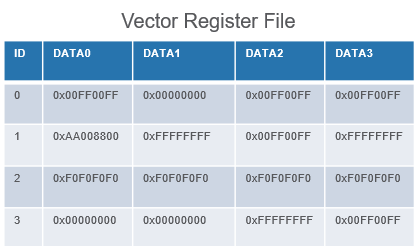4 - ISA Classification
ucla | CS 161 | 2024-01-22 21:47
Table of Contents
ISA classification
CISC
- small reg file
- many instructions
- complex instruction -> multiple ops taking multiple cycles
- complex addressing - imm, reg, memory
- complex data types - string, complex
- variable length instrs - compact representations
- Design motivations
- few instrs
- optimized instrs to reduce CPI
- uniform instr format
- duplicate gen regs
- simple addr mode
- fewer dtypes
- fixed len instrs - simple decoding
- Design motivation
- intels large legacy
- need to translate CISC to RISC
- domain specific ASICS e.g. Google TPU, needs CISC like MatMul
VLIW (Very long instr word) ISA
- encode many ops into single long instr word
- execute each op on diff exec unit in parallel
- e.g. IA64
- static instr scheduling -> compiler responsible for dependency mitigation and parallel checking
- relies on wide 64-bit data bus instead of multiple fetches
Design Motivation
- Hardware simplification
- Move the complexity of instruction scheduling to the compiler
- No need to worry about data dependency
- High Parallelism
- Compiler complexity
- Expensive if hardware changes
- Portability
- Too much coupling with hardware
- Process changes renders binary incompatible
- Static Scheduling
- Limits runtime adaptation
- e.g. cache miss, branch prediction, etc…
- Code Size
- Instructions are typical large, increase memory bandwidth
Vector ISA
- single instruction multiple data (SIMD)
- parallel fetch data
- e.g. ARM Neon, Intel AVX
Limitations
- mem bandwidth
- increased mem reqs for data fetch
- control flow limitations
- divergent conditional values hard to deal with when branching
- programmability
- vectorization not always possible
- data/memory alignment - fragmentation
